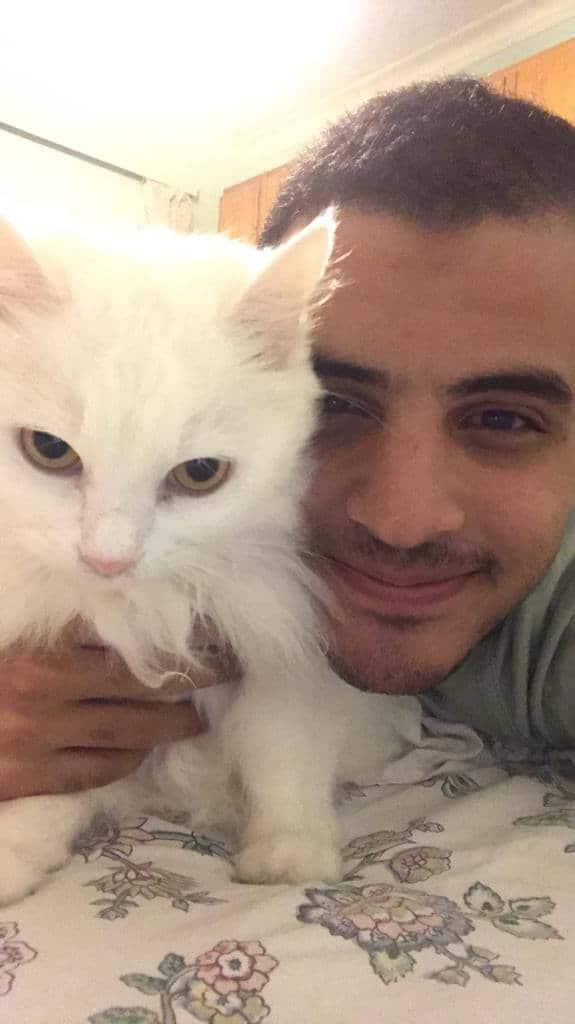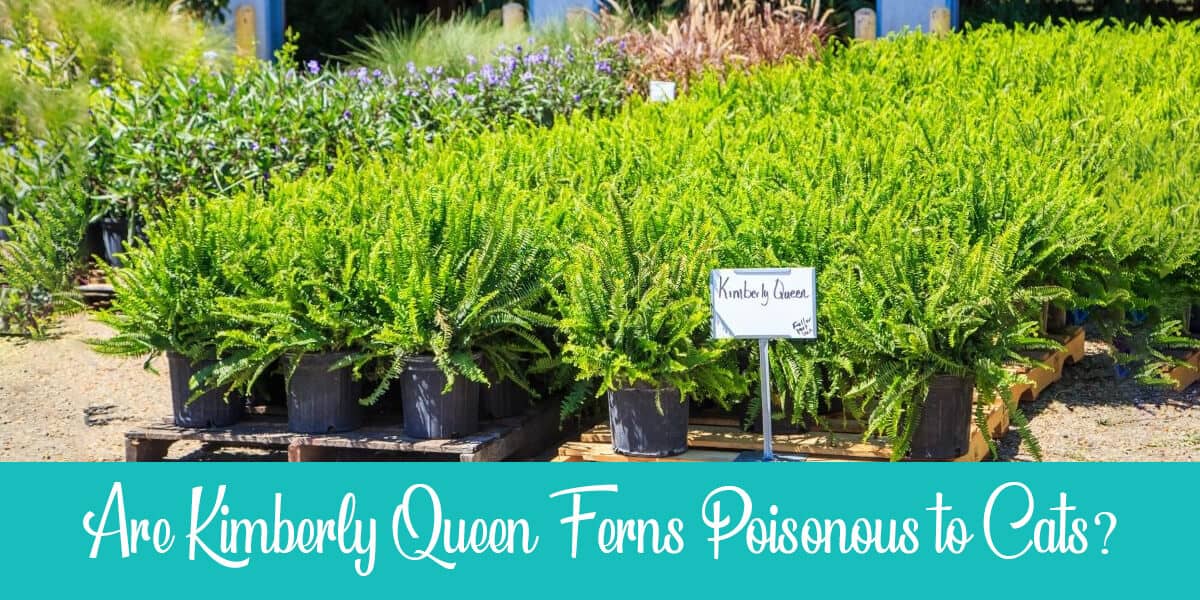Plants are found in almost every home because they add visual beauty and are good for our health. If you’re a cat owner, though, you need to be careful with which plant you’re bringing home.
Kimberly Queen fern, aka sword fern, is a favorite house plant for many, as it’s easy to grow indoors and looks beautiful. If the sword fern is a favorite of yours, then you need to keep in mind that you might run into trouble if your cat decides to eat it.
Many cats love to nibble on house plants. Unfortunately, not all houseplants are safe for cats. Are Kimberly Queen ferns poisonous to cats? We’ll be answering this question in detail in this post.
Table of Contents
Are Kimberly Queen Ferns Poisonous to Cats?
Kimberly Queen ferns, like most ferns, are safe for cats. However, when ingested, they can cause mild stomach issues.
Just because Kimberly Queen ferns are considered safe doesn’t mean that they’re okay for felines to feed on. If they’re consumed in large quantities, they can cause serious symptoms that might need a visit to the vet.
Why Does My Cat Like to Eat My Kimberly Queen Plant?
Although they’re carnivores and only require meat-based food, cats sometimes like to nibble on plants. There isn’t a specific reason why cats eat plants; they just do!
Maybe they like their taste or are just tempted by their leaves. Maybe they do it out of boredom.
Some think that because cats in the wild sometimes eat plants, they may be doing so for some added fiber and nutrients.
What Happens if My Cat Eats Kimberly Queen Ferns?
You shouldn’t worry if your cat eats a small part of a Kimberly Queen ferns as most true ferns aren’t toxic to cats. Few bites won’t hurt your cat.
However, when a cat eats a large amount of the plant, even if it’s a non-poisonous plant, the cat might experience stomach pain, vomiting, and diarrhea.
In most cases, symptoms from ingesting Kimberly Queen ferns or any type of true ferns aren’t severe enough to require medical attention.
The symptoms act as a reaction to ingesting a foreign object, which is your plant in this case.
How to Get My Cat to Stop Eating My Kimberly Queen Plant?
There are some things you can do that can help you keep your cat away from your favorite houseplant.
You can use your cat’s sensitivity to smell against her. Throw a lemon peel in your plant’s soil or sprinkle some cayenne pepper around it. This should make your plant unpleasant to your cat.
Another thing you can do is spray a mixture of vinegar and water directly on your plant’s leaves. Some people find that spraying Grannick’s Bitter Apple Liquid on their plant leaves helps keep their cats away from their plants.
If that doesn’t work, you can try satisfying your cat’s desire for eating plants. You can use pet grass, which is a safe product for your cat to eat and fulfill her plant cravings.
You can also plant wheatgrass as an alternative. This way your cat will eat the wheatgrass and leave your other plants alive.
Make sure not to put your cat’s grass next to your plants to avoid giving her mixed signals about eating your favorite plants.
What About Dracaena and Daffodils? Are they poisonous to cats or not?
What Other Plants Are Safe for Cats Besides Kimberly Queen?
Luckily, many plants are considered safe for cats so you can enjoy having them inside your house. Here’s a list of some common safe plants for cats:
- True ferns like Boston Fern, Mother Fern, Carrot Fern, and Kimberly Queen Fern
- Camelia
- Cornflower
- Spider plant
- Oregon grape
- Orchid
- Parlor Palm
- African Violet
- Certain succulents like Echeveria and Haworthia
- Gloxinia
- Peperomia
- Baby Tears
Also, check the ASPCA Animal Poison Control Center for a complete list of safe plants for cats.
Keep in mind that just because a plant is safe for cats doesn’t mean that its consumption won’t cause your pet some issues.
Cats ingesting safe, non-poisonous plants might cause minor gastrointestinal issues, diarrhea, and vomiting.
Related: Are Bromeliads Toxic to Cats?
What Houseplants Are Toxic to Cats?
Many popular houseplants that we love to have in our houses are toxic to cats. The best thing we can do is not bring them home to avoid hurting our lovely felines.
Here’s a list of common poisonous plants for cats:
- Autumn Crocus or meadow saffron
- Azaleas and Rhododendrons
- Asparagus Fern
- Boston Ivy
- Cyclamen aka Persian violet
- Cactus
- Narcissus
- Dieffenbachia
- Kalanchoe
- Lilies (very toxic)
- Oleander
- Sago Palm
- Tulip and Hyacinth
- Marijuana
- Tomato leaves
This is not a complete list of plants that are toxic for cats. We highly recommend you check ASPCA Animal Poison Control Center for a complete list.
What to Do If My Cat Eats a Toxic Plant?
Plant toxins are irritants to cats, so the symptoms will be in the form of irritation or inflammation, such as swelling, redness, and itchiness of the skin.
If the gastrointestinal tract is deeply affected by the plant toxins then the following symptoms will appear within two hours:
- Vomiting
- Diarrhea
- Difficulty breathing
- Drooling
- Irregular heartbeat
- Drinking and urinating excessively
Once a cat shows any of these symptoms, she needs to be taken to the vet immediately. It’s recommended to identify the plant she ate or collect a sample of her vomit.
Don’t wait for your cat to show any symptoms if you catch her eating a poisonous plant. Instead, call or visit the vet immediately.
Recommended: Are gardenias safe for cats?
What to Do if I Found My Cat Chewing on My Kemberly Queen Fern?
If your cat chews on a plant, whether it’s toxic or not, it’s recommended to remove any plant material from your cat’s skin, mouth, and fur. Also, wash your cat with warm water and some gentle dish soap.
If the plant is a Kemberly Queen fern, chances are your cat will be fine and won’t need a vet visit. If the plant is toxic, then you should head to the vet immediately.
To Sum Up
Kemberly Queen fern are attractive to cats like many other plant types. It’s considered safe for cats, so you don’t have to worry about it if your cat takes a small bite.
Ingesting large quantities, per contra, can cause some problems. If your kitty shows abnormal symptoms from consuming a plant, don’t hesitate to call your vet immediately.

I’ve been living with cats since 2008 and I can confidently say I have more feline friends than humans lol. I currently live with 5 cats in different life stages; two of them are less than one year old, one is 2-ish years old and the oldest two are 9-ish years old. I’ve developed a strong bond with cats over the years and I’m eager to share my experience through this blog. You can learn more about my cats here.

